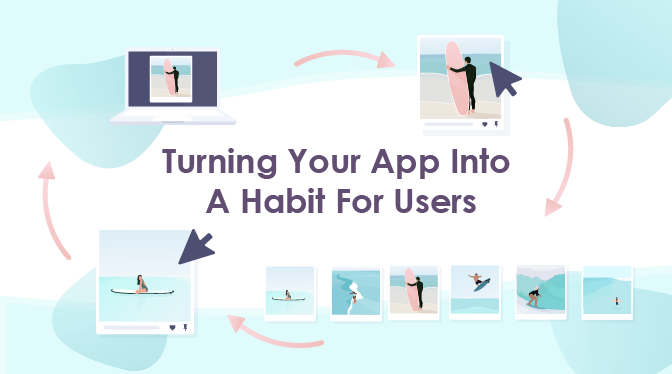
Turning Your App Into A Habit For Users
Posted on August 5th, 2020
This guest-post is courtesy of our partners at Tapadoo.

It's not a secret that social communities are the focus of some of the most successful companies. In April 2012, just 18 months after the initial launch on the App Store, Instagram was acquired by Facebook for $1 billion, and the price of this deal surprised many entrepreneurs and developers. Over the next few years, Facebook bought WhatsApp for $19 billion, and Snapchat's estimate rose from $10 billion to $20 billion. The point is that community and social connections are of great importance nowadays and that’s why integrating social features into applications is one of the keys to the success of your mobile app marketing plan. Let’s find out exactly how it works and what you can do to turn your mobile app into a community.
What is so special about communities and what makes them a popular feature of many successful apps? There are at least three reasons for that:
According to a study by Localytics, 23% of users opened sports apps only once after installing them. Here’s why:
On the other hand, if you add some social functions to the product, you’ll get to see the desired changes. For example, the Fitbit app allows users to track the progress of friends - it is very inspiring and motivating. As a result, the percentage of returning users goes up.
Source: blog.fitbit.com
Every app developer wants to know as much information about their users as possible. Issues your users come across within your app, their opinions and preferences are a priceless source of information you can use to improve your product. You can achieve this by introducing activity feeds where users can share their updates and interact with other users.
For example, a game development studio Godzi Lab implemented activity feeds in their Crush Them All game so that the community managers could interact with users and support them. As a result, the company got 60% higher LTV for referred players, 50% higher retention for referred players, and 3x of lifetime Activity Feed users.
Source: getsocial.im
With growing competition, it’s extremely important for any developer to stand out from thousands of similar apps. A community is an important element of such differentiation. It’s possible to copy the functionality, but it’s impossible to copy the community.
A great example is Nike+. A platform created by Nike which encourages people to be active, motivated, and healthy. It is built around Nike’s Run app, which offers distance tracking, calories and speed calculator. The community now has over 30 million members.
Source: nike.news.com
It might seem challenging to create a loyal in-app community, but here are some tips to help you kick off:
Successful community management results in happy and satisfied users. If you develop a community, your users become super fans who talk about the app with their friends. They bring new users who are already pre-loyal to your product. It turns out that a good community manager brings in new users who most often remain with the app for a long time with their friends. It’s hard to find a more efficient marketing channel that brings so many new loyal users.
According to Jennifer Grayeb, there are four key features of successful community management:
Managing an in-app community also helps the developers with the following:
Building a community around your app is a perfect way to put the app ahead of the competition with the help of loyal and happy users. Communities help app developers engage and motivate their audience as well as better understand them. So if your app doesn’t have a community yet, it’s a perfect time to start. Good luck!
Author’s Bio
Anastasia Khomych is a content marketing manager at GetSocial, an all-in-one solution to empower mobile app marketing and product teams with growth tools to maximize user acquisition, engagement, and retention.

This guest-post is courtesy of our partners at Tapadoo.

This guest-post is courtesy of our partners at Performante.

This guest-post is courtesy of our partners at eKreative.